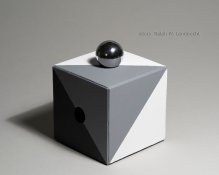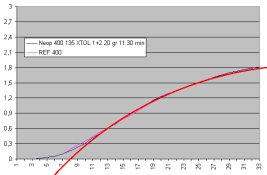stradibarrius
Member
Yesterday I have a professional film photographer look at some of my negatives and he immediately said they were under developed. The printing in the margins was still gray opposed to being black.
So that makes me feel like I need to back up a step or two and find out how to tell if I underdeveloped my negatives.
Is there a way to tell oris it like most things in photography..."it depends"?
So that makes me feel like I need to back up a step or two and find out how to tell if I underdeveloped my negatives.
Is there a way to tell oris it like most things in photography..."it depends"?









 ), and you find yourself printing on grade 3 or higher paper/filters for shots that were taken in normal-contrast light, then your negatives are underdeveloped.
), and you find yourself printing on grade 3 or higher paper/filters for shots that were taken in normal-contrast light, then your negatives are underdeveloped. .
.


